Frequently Asked Questions
ADA & Braille Signs
- Short for the Americans With Disabilities Act, the ADA was signed into law by President George H.W. Bush in 1990. The law created, among other things, a set of standards for “public space” signage to accommodate the visually impaired or blind.
- In 2010, the United States Department of Justice released revisions to the original ADA Code, including design standards for ADA Signage. These specifications outline requirements for raised elements, braille, and non-glare finishes.
- A Business that provides “Goods and Services” to the public is considered a “Public Accommodation” and shall comply with the ADA. Specifically, US DOJ guidance lists the following categories for public accommodation, which must comply:
- Retail stores
- Restaurants
- Bars
- Service establishments
- Theaters
- Hotels
- Recreational facilities
- Private museums and schools
- Doctor & Dentist offices
- Shopping malls
- The businesses listed above are required to comply with the ADA regardless of the size of the business, or age of the property.
- A sign that complies with the Americans with Disabilities Act (ADA) standards ensures accessibility for individuals with disabilities, particularly those with visual impairments. These signs often include tactile lettering, braille, and pictograms, and have specific requirements for contrast, size, and placement.
- ADA signage is required for identification signs on permanent rooms or spaces, including restrooms, elevators, stairwells, and exits. Accessible doors and doorways must be marked with ADA signage, as well as areas of refuge.
- Directories, logos, menus, and room occupant names are not required to comply with the raised element and braille requirements for ADA signage. Overhead hanging signs, similar to those seen in airports and hospitals, also do not need to comply.
- ADA signs are custom designed to fit the decor. CAD (Computer-Aided Design) software is used to ensure compliance with the text height, spacing, and braille requirements of the ADA.
- A CNC (Computer Numerical Control) machine is used to create insertion points for the braille beads, and to cut out the raised elements. A laser or CNC Router is then used to cut out the final shape of the sign (typically 6″ x 6″). Signs can be mounted with very high bond (VHB) tape or fastened with standoffs.
Elmark Sign Company has made ADA signs from a variety of different materials, with the most common being acrylic, engraving plastic, and cast metal.
Yes, Elmark Sign Company can produce ADA signs in almost any color scheme to match any preferences. The most common colors of braille beads are clear, white, black, grey, and stainless steel.
Yes, Elmark Sign Company's clients frequently request a non-glare “window” in office and conference room signs to provide for the addition of non-permanent text such as names, titles, or room names. The paper insert can easily be reprinted and replaced in the future as offices change and/or staff are promoted.
ADA sign installation requires mounting signs with braille and tactile characters at a height between 48 and 60 inches from the floor, measured from the baseline of the characters. The signs should be located on the latch side of the door, and a clear floor space of 18 inches by 18 inches must be centered on the tactile characters.
For custom ADA signs, like those made by Elmark Sign Company, product costs range from $50-$100 per sign on average. Some of the more elaborate, and labor-intensive designs can range well over one hundred dollars each.
- The size and complexity of the order will, in large part, determine the lead time. Expect an average of 1-2 weeks for standard color signs, and 2-3 weeks for painted signs.
- Expedited processing may be available upon request.
As the name suggests, acrylic panel signs are made using plastic sheets as the primary substrate. Clients can choose between clear (gloss, non-glare, etc.), white (opaque, translucent, etc.), or painted acrylic.
Choose between:
- Thickness: 1/8″ to 1″
- Color: Clear, frosted, or painted
- Vinyl: First and/or second surface (i.e., the front and/or back surface)
- Direct print: First and/or second surface (i.e., the front and/or back surface)
- Returns (aka sides): Can be polished or painted
- Standoffs: Available in brushed aluminum, anodized aluminum, black, gold, or copper.
Printing and painting options are available on either the first (front) or second (back) surface. Vinyl graphics applied second surface (the back) to clear or translucent acrylic, for example, give the effect of added depth and gloss. First surface (front) graphics will appear more matte and with less depth.
On average, a 3′ x 6′ acrylic panel with applied vinyl will cost between $500 to $1,000. The cost is driven largely by the thickness of the acrylic, and complexity of the project.
The average acrylic sign panel is produced in a few business days. 24-hour turnarounds are possible for rush orders.
Acrylic Panel Signs
As the name suggests, acrylic panel signs are made using plastic sheets as the primary substrate. Clients can choose between clear (gloss, non-glare, etc.), white (opaque, translucent, etc.), or painted acrylic.
Choose between:
- Thickness: 1/8″ to 1″
- Color: Clear, frosted, or painted
- Vinyl: First and/or second surface (i.e., the front and/or back surface)
- Direct print: First and/or second surface (i.e., the front and/or back surface)
- Returns (aka sides): Can be polished or painted
- Standoffs: Available in brushed aluminum, anodized aluminum, black, gold, or copper.
Printing and painting options are available on either the first (front) or second (back) surface. Vinyl graphics applied second surface (the back) to clear or translucent acrylic, for example, give the effect of added depth and gloss. First surface (front) graphics will appear more matte and with less depth.
On average, a 3′ x 6′ acrylic panel with applied vinyl will cost between $500 to $1,000. The cost is driven largely by the thickness of the acrylic, and complexity of the project.
The average acrylic sign panel is produced in a few business days. 24-hour turnarounds are possible for rush orders.
Vinyl Graphics
- For most vinyl wall graphics, a semi-gloss or gloss paint finish is recommended. Avoid matte, flat, or eggshell finishes as they can have a rough, dusty texture that makes it difficult for vinyl to adhere. Additionally, avoid low-VOC or no-VOC paints, as they may reduce film adhesion.
- Vinyl will accentuate and draw more attention to any bumps or depressions in the wall, especially with low angled light. For the best outcomes with high visibility walls we recommend a level 5 finish, which entails a skim coat of joint compound (also known as mud) applied to the wall before painting to minimize or eliminate any visible defects. Alternatively, some clients will add a large acrylic backer that is fastened to the wall and provides a clean, smooth surface for the vinyl.
Yes, vinyl is exterior durable through all forms of weather. Elmark Sign Company commonly adds an overlaminate to combat the bleaching effects of the sun and help maintain the original coloring.
Elmark Sign Company can produce vinyl in any color desired, often matching very specific Pantone colors to meet branding requirements.
Yes, through the use of modern printing technology, Elmark Sign Company can produce photograph-quality imaging on vinyl for interior and exterior applications.
Yes, Elmark Sign Company can remove any existing vinyl that is no longer needed. Although done carefully, this may expose damage to walls or windows. The most common issue is “ghosting,” where the paint around the old vinyl has faded more than the paint under the vinyl, with that contrast varying from negligible to significant based on the darkness of the paint color and historic light exposure.
The pricing of vinyl graphics is dependent on the size, specific film material chosen, and installation complexity. While lettering single-color names on a door may cost only several hundred dollars, more involved projects such as wall murals, dusted vinyl privacy treatments on windows, and/or re-vinyling an existing sign could quickly cost more than a thousand dollars.
The average vinyl project is produced in a few business days. 24-hour turnarounds are possible for rush orders.
Carved Signs
Carved signs are signs in which letters and logos are carved into the substrate. In our earlier years, carved signs were made by hand. Today, sophisticated CNC (Computer Numerical Control) machines are used to make all of our carved signs.
There was a time when all carved signs were made out of wood, but today almost all carved signs in the United States are made from high density urethane (HDU). It is a hard, closed-cell polyurethane foam board offering the look of wood, but with superior durability, versatility, and resistance to moisture. This rigid substrate will not rot, warp, or crack.
Letters and logos are carved into the substrate (usually HDU) with a CNC router machine. Once the design is completely carved, a full 1-week painting process begins. Once the undercoat is perfect, we spray several coats of clear to ensure longevity and protection from UV rays.
Elmark Sign Company commonly finishes carved signs with flat, satin, or gloss paint. For a special flair, some clients will select imported gold leaf for lettering, logos, or other aspects of their sign.
Elmark Sign Company has built signs wider than 15 feet and/or over 75 square feet.
Yes, a carved sign can have raised graphics through a technique called relief carving. In relief carving, the background material is carved away, leaving the letters, images, or designs raised above the surface of the sign.
More commonly, carved signs are routed to create incised letters or graphics. Incised letters or graphics are carved into the high density urethane.
Carved signs are frequently post-mounted, wall-mounted, or hung from a scroll bracket. Elmark Sign Company has some clients that have installed carved signs into masonry monument signs as well.
The price varies by complexity of design and thickness of material. On average, products costs range from $250 to $350 per square foot, measured from a single face of the sign.
Carved signs generally take 2-3 weeks to deliver.
- Through a proprietary painting process we’ve developed over 4 decades, our HDU carved signs are hand sanded and primed several times before applying the first, of three coats of paint. After ample curing time has passed, we finish the sign with 3-4 applications of clear coat. The result is a superior finish, which resembles that of a brand new car.
- We are so confident in our work, that we offer a full, 5-year warranty on all of our signs (5 times the national average).
Dimensional Letters
Dimensional letters are three dimensional (3D) sign letters, which are made out of metal, acrylic, or plastic with a CNC (Computer Numerical Control) router or laser machine.
Dimensional letters can technically be made from almost any material, with the most common being acrylic, aluminum, PVC, bronze, brass, and stainless steel.
- Different material options have their own unique production process. Fabricated metal letters, for example, are made by bending thin metal returns (sides) around a flat, CNC-cut, metal face. The returns (sides) and face are welded together to form the letter (or logo). The inside of these letters are hollow and the letters, themselves, are light weight.
- Cut metal letters, also referred to as “Flat cut” letters, are made by machine. A CNC (usually a router, plasma cutter, or waterjet), will cut the letters out of metal sheets. The thickness of the metal sheet determines the thickness of the letters. Cut metal letters are solid and heavier in weight than fabricated metal.
- Acrylic letters are made in a similar way as flat cut metal letters, in that a CNC machine (usually a router or a laser), will cut the letters out of a sheet of acrylic. The thickness of the acrylic will be the thickness of the letters. They are solid letters but more lightweight than solid, cut-metal letters.
Elmark Sign Company can produce dimensional colors in any color, matching specific Pantones to meet branding requirements.
Elmark Sign Company can install dimensional letters into virtually any interior or exterior wall surface, including drywall, poured concrete, and masonry walls.
Yes, most materials are exterior durable and thus suitable for installation inside or out.
- Dimensional letters are frequently installed with studs or tape. Mounting with studs means using small, threaded metal prongs on the back of the sign to attach it to the wall or other surface. Alternatively, Elmark Sign Company can use very high bond (VHB) tape to mount dimensional letters, which is a type of double-sided, pressure-sensitive adhesive tape known for its strong and durable bonding capabilities in both interior and exterior applications.
- Some clients select to have their dimensional letters offset from the mounting surface. Through the insertion of spacers, this creates a unique effect that can vary from as little as one quarter of an inch to half a foot or more.
- Stud mounting is recommended for heavier letters, such as aluminum letters, steel letters, or really thick acrylic letters. The heavier the letter becomes, the less likely that VHB tape will hold them in place over the long term.
- Thinner acrylic letters are easily installed with tape mounting.
- Pro tip – Always add a dab of clear silicone before taping mounted letters. Having two adhesives (the VHB tape and the silicone) offers the best long-term result.
- One should note that removing any dimensional letterset is likely to cause wall damage. Stud-mounted letters leave holes, which can be patched and painted. Adhesive-mounted letters may actually pull up the paint and/or gypsum paper of the drywall when removed, requiring more intensive repairs.
Illumination. The difference between 3D letters (also called dimensional letters), and channel letters is the presence (or absence) of lighting. To put it simply, channel letters are illuminated, while dimensional letters are not.
- A permit is most likely not needed for installation indoors, such as within an office building or home.
- For installation on a building, or outdoors, a sign permit is commonly needed from the local municipality. Their website should have additional information on permitting requirements.
- Yes, we commonly install multiple sets of dimensional letters each week for our clients, as they are a very popular sign type.
- For those client located farther away, we have a national network of professional installers that we’ve developed over 40 years. We can install virtually anywhere in the United States.
If the letters are stud mounted, installation requires a drill, masking tape, a level, silicone, a tape measure, and a center punch (optional). If the letters are tape mounted, the drill and center punch are not needed.
The price will vary greatly based on material, finish, thickness and complexity of design. On average, for a 12″ high letter in 1/4″ thick aluminum, expect to pay between $100-$200 per letter. The same letter in brass, copper, or stainless steel would add a premium. The same letter in 1/4″ acrylic would be between $50-$100 each.
Production times will vary based on the material and complexity of the project design. In general, lead times will be:
Cut acrylic or metal (unfinished): 2-4 business days
With premium metal finish or painting: 7-15 business days
Fabricated metal (unfinished): 6-10 business days
With premium metal finish or painting: 15-20 business days
Illuminated Signs
- FACE LIT: Also known as front-lit signage, face lit signs have a light source that shines directly through the translucent face of the sign, illuminating the letters or shapes. It’s a common and popular choice for businesses due to its bright and visible appearance, making it suitable for both indoor and outdoor applications.
- HALO LIT: A halo lit sign or reverse-lit sign is a type of illuminated signage that creates a glowing effect around the letters or logo. This is achieved by mounting the letters or logo on standoffs, creating a space between the sign and the surface, and then shining light from behind to create a halo effect. This type of signage is often used for its sleek, modern, and virtually striking appearance.
- SPOT LIT: As the name describes, these signs use a spotlight placed some distance away from the sign to make it readable at night. These are frequently used to highlight carved or other signs that cannot be internally lit, or when getting power all the way to the sign is a challenge.
Yes, through the use of LED lighting, virtually any color can be incorporated into an illuminated sign.
Yes, according to the National Electrical Code, lighted signs generally require their own dedicated branch circuit. This ensures a continuous power supply and prevents overloading other circuits.
Yes, Elmark Sign Company can connect to an existing power source at the specific sign location on the property. When clients need power to be run out to a sign from the circuit breaker box, we will partner with their electrician to complete the installation.
Yes, Elmark Sign Company only installs UL certified lighting. UL certification, from Underwriters Laboratories, indicates a product has been tested and certified to meet specific safety standards.
The price varies greatly by size, material, and the complexity of the installation. While small, interior projects start in the low thousands, large, exterior signs at height are frequently several multiples higher in cost.
Custom-fabricated, lighted signs generally take 3-6 weeks, depending on size and complexity.
Monument Signs
Monument signs are low to the ground, freestanding sign structures which often have vertical support structures that are concealed by an enclosed base.
Monument signs are generally made from common building materials, including stone, cement, aluminum, high density urethane (HDU), and wood.
Yes. Dimensional letters, also known as 3D or raised letters, are a type of signage where letters are fabricated from materials like metal, acrylic, or foam and are mounted to a surface, creating a three-dimensional, eye-catching visual. Many clients select dimensional letters on the face, or offset from the surface, of their monument sign.
Yes, Elmark Sign Company can connect to an existing power source at the specific sign location on the property. When clients need power to be run out to a sign from the circuit breaker box, we will partner with their electrician to complete the installation.
Yes, Elmark Sign Company can help assess whether an monument sign can be refurbished (e.g., solid footing, free of rot/rust, etc.). For suitable signs, we can work with clients to repaint, overlay, and/or rejuvenate their monument sign(s) to provide a fresh, clean look.
Almost certainly, yes. Most local governments (townships, cities, and/or counties) have jurisdiction to regulate zoning and building codes. There are often sections within their land use code that are specific to signage. Some municipalities are particular about the allowable sizes, and even design and materials.
The first step in any monument sign project is proper code research. First, find out the actual jurisdiction of the property. This may be different than the post office listed on the mailing address. Next, conduct an internet search of the jurisdiction along with the word “municode.” For example, if the property was in Elmarkville, one could Google “Elmarkville Municode,” to find a searchable version of their various codes. Narrow the search to “signage” to more quickly find the most relevant sections, which speak to signage requirements, including allowable square feet, regulations for electric signs, and other info such as permit fees.
Yes, Elmark Sign Company offers an additional service to apply for required sign permits.
Yes, when installation or removal requires any digging, Elmark Sign Company will request Pennsylvania One Call (or similar entity in NJ, DE, or other states) to come and mark all underground utilities near the dig site. This helps keep everyone safe, protect the property and uninterrupted utility service, and comply with the law.
The price of a monument sign will vary greatly, based on materials, size, and electrical wiring (if any). In general, monument signs are a premium signage product. For a non-illuminated monument, prices range between $5,000 and $15,000. Illuminated monument signs range between $10,000 and $25,000. Monument signs with electronic message screens often exceed $30,000 in total costs.
The production lead time for most monument signs is frequently 2-4 weeks after the permit is granted. Permitting times vary across municipalities from 7-10 days for those with rolling application processes to over thirty days for zoning departments with a monthly rhythm to their permit reviews.
Plaques
Traditional plaques are made of brass, bronze and aluminum. With computerized engraving capabilities, the definition is often broadened to included etched aluminum or plastic, both of which are great for small fonts and/or detailed logos.
Elmark Sign Company has produced plaques from 2 x 2 inches up to 5 x 8 feet.
Yes, Elmark Sign Company has the capabilities to include a photograph and/or portrait into a plaque, from high resolution to a softer, cast metal depiction.
Plaques can be installed with mechanical fasteners (e.g., screws with or without rosettes) or very high bond (VHB) tape in some instances, depending on weight and wall material. Plaques can be designed to be installed on drywall, masonry surfaces, or other dense materials (e.g., benches, trees, etc.).
Yes, the background can be colored to a specific Pantone color to match preferences and/or brand requirements.
Prices vary based on material and size. Small etched or cast plaques may cost several hundred dollars, while larger, cast pieces (>12” square) may approach a thousand dollars or more.
The production lead time for most plaques is roughly three weeks.
Vehicle wraps
Vehicle wraps are vinyl graphics that are digitally printed on wide format commercial printers, and then carefully applied to the exterior of a car or truck.
We believe that quality begins with using the best products, which is why our vehicle wraps are made exclusively with premium 3M ControlTac vinyl , and protected with 3M overlaminate.
Vehicle wrapping offers one of the lowest cost ways (CPM or Cost per Mille) to display a brand to a wide audience. Whether driving on the road or parked, vehicle graphics will promote the brand through day and night.
No, Elmark Sign Company has a team of graphic designers who can help with design and iterate with clients until it is “just right.”
Yes, Elmark Sign Company can apply a perforated window vinyl that looks like the intended graphic images from the outside, but one can still see through the vehicle wrap from the inside.
- Provided that high quality vinyl was used on the wrap installation, the removal process should be relatively painless. Premium wrap films, such as 3M ControlTac vinyl, are designed to be removed without leaving adhesive residue.
- Lower quality films can be trickier, as the film can fragment and/or separate from the adhesive, leaving behind a goopy mess to clean off.
- There is one caveat – If the vehicle has been in an accident, and painted with less than factory grade paint, there could be a potential for paint lift when the vinyl is removed.
Yes, Elmark Sign Company can remove old vinyl prior to installation of new vehicle wraps. We primarily ask that the vehicle be brought in with a clean exterior free of dirt and wax.
- Yes, but give it a few days after the initial installation. We recommend waiting a few days to ensure the vinyl adhesion has taken hold and will not be affected by water or rainfall.
- High quality wraps are protected with an overlaminate, which is a clear layer of film that has been applied over the actual print. The ink itself is protected thanks to the overlaminate.
Yes! Heat is no match for this vinyl. In fact during the installation process, our installers typically heat the vinyl to 650 degrees during the installation. They then heat the vinyl to 1000 degrees during the process called “post-heating,” which locks the vinyl’s shape to permanently conform to the vehicle.
- In general, no. Actually, vehicle wraps can protect the car’s paint from sun damage and minor abrasions.
- There is one caveat – If the vehicle has been in an accident, and painted with less than factory grade paint, there could be a potential for paint lift when the vinyl is removed.
No, and in fact, it may add to it. The car’s paint job will be fully protected by the vinyl wrap, so after getting years of great use out of a shiny new wrap, one can safely remove the film, and find the underlying paint job preserved in the same state as the day the wrap was installed.
Elmark Sign Company's vehicle wrapping professionals install at our West Chester location in Pennsylvania.
- Our clients are nationwide, but most of our vehicle wrapping clients are located within Philadelphia, Chester, Bucks and Delaware Counties in Pennsylvania, and New Castle County in Delaware.
- Specific areas include West Chester, Chadds Ford, Downingtown, Philadelphia, Wilmington, Exton, King of Prussia, Kennett Square, Glen Mills, Malvern, Media, Paoli, Phoenixville, Norristown, Newtown Square, Wayne, Bryn Mawr, and Coatesville.
Yes, Elmark Sign Company supports many of the most admired fleets in our area. Our vinyl team works with clients on scheduling to minimize down time and keep their “mobile billboards” fresh and clean as they represent their brand.
- The film used is a large driver of the cost, as Elmark Sign Company prefers to use high quality 3M ControlTac materials.
- Separate lettering and logos range from $1,500-$2,500 based on size and complexity. Full wraps covering all surface areas are frequently $4,000-$6,000 depending on the size of the vehicle.
The bulk of the time spent is in the design stage of the vehicle graphic process. Once a design is approved, the installation can usually be completed in one day. Larger trucks, or more complex designs, can take up to three days.
Channel letters
Channel letter signs are illuminated 3D letters that are mounted to a wall or facade. They are considered one of the more premium sign products available.
- FACE-LIT: The light source inside the letter shines through the front face, typically made of translucent acrylic. This creates a clear and bright illumination of the letter itself, making it a popular choice for storefronts and other businesses.
- HALO-LIT / reverse-lit / back-lit: The light source shines from behind the letters, creating a glowing halo effect on the wall behind. Instead of light shining through a translucent face, the light is emitted from the back, reflecting off the mounting surface to produce a soft, elegant glow.
- EDGE-LIT: Letters have an opaque face and translucent sides (aka returns), allowing the light source to shine through the sides to create a sharp contrast with the face and subtle glow around each letter. Edge-lit letters often feature a sleek, modern look and are frequently used in retail and corporate settings.
- Channel letter fabrication involves several main components – the faces, the backs, the sides (returns), the LED modules, and the trim caps.
- The faces and backs are often made from poly-carbonate and aluminum, respectively. Both are cut with a CNC (Computer Numerical Control) router. Vinyl can be applied to the poly-carbonate faces to match any desired color.
- The sides (returns) are made by bending a thin coil of aluminum, either with a machine or by hand, which is usually 1-5″ in depth. The returns are commonly secured to the aluminum backs with rivets. The faces are secured by a thin piece of plastic called the “Trim Cap,” which follows the contour of each letter.
- The LED modules are secured to the aluminum back of the letters, which allows the light to shine through the poly-carbonate face (for front lit letters).
While there really is no limit to the maximize size, the smallest letter height varies by the construction material and the stroke width of the font to allow sufficient size to house the internal lights. Face-lit and edge-lit letters are typically at least 9” tall to be readable from a distance, while halo-lit letters can get as small as 3”. Elmark Sign Company's design team can help identify the desired reading distance and translate that into the necessary channel letter sign size for a given font.
- RACEWAY: A rectangular metal box, typically made of aluminum, that serves as a mounting structure and an enclosure for the electrical components of a channel letter sign. It provides a stable platform to attach the channel letters to the building, often requiring fewer mounting holes than individual letter mounting. Raceways are usually painted to match the wall’s façade, making them less noticeable and allowing the channel letters to stand out.

- PAN: A typically rectangular enclosure or housing that serves as a background to the letterset. Instead of directly attaching the individual letters to the building, the letters are first mounted to a metal pan. The pan acts as a backing for the letters, concealing components like LEDs, wiring, and power supplies, protecting them, and allowing for even illumination of the letter faces.
- FLUSH STUD MOUNTED: An installation approach where channel letters are flush-mounted or directly mounted to the wall’s surface. This involves attaching each letter directly to the wall, requiring anchor points and wiring for each letter. Installers generally need access to the back of the wall where they make holes to combine the wires and connect them to a dedicated electrical circuit.
- There are two main benefits to using a raceway – ease of installation and a reduced number of penetrations (drill holes) into the building.
- Raceway installations generally involve drilling 4-8 holes into the building, as compared to flush stud, or direct mounted letters, which often require 4 or more holes per letter. Many landlords require raceway mounting to limit the number of drill holes into their building.
- From a financial standpoint, adding a raceway will certainly add to the cost of the sign. However, it should also reduce the time/labor required for the installation.
In one word – illumination. Channel letters are illuminated while dimensional letters are not. Because of this, channel letters are generally deeper, as the aluminum “can” structures must be deep enough to hold the LED modules. Click the following links for more information on dimensional letters (3D letters).
Yes, channel letters are often used for interior signage in lobbies, reception areas, and retail spaces to create a professional and eye-catching display. While commonly found on building exteriors, channel letters offer a versatile signage solution for both indoor and outdoor applications.
Yes, according to the National Electrical Code, lighted signs generally require their own dedicated branch circuit. This ensures a continuous power supply and prevents overloading other circuits.
Channel letters are considered premium signage products and tend to be expensive. The cost of a channel letter will vary widely, based on the materials, complexity and size. The average cost of a single 12″ high channel letter will range between $300-$500.
The average turnaround time for channel letters is 3-6 weeks.
Interior Signs
- ADA and Braille Signs are required in public spaces to make them more accessible for people with disabilities.
- Carved Signs offer a distinctive look with added dimension, texture, and character.
- Dimensional Letters are individual characters or symbols that are designed with depth, creating a three-dimensional effect when mounted on a surface.
- Illuminated Signs use an internal light source to attract attention, such as channel letters, light boxes and custom routed cabinets.
- Plaques provide a distinguished and long-lasting approach to honor people and events.
- Vinyl graphics made from self-adhesive films can provide everything from lettering to signs and directories to colorful images and logos to walls.
- Wayfinding Signs and Directories help visitors navigate their journeys through different spaces.
Interior signs are frequently installed with studs or tape. Mounting with studs means using small, threaded metal prongs on the back of the sign to attach it to the wall or other surface. Alternatively, Elmark Sign Company can use very high bond (VHB) tape, which is a type of double-sided, pressure-sensitive adhesive tape known for its strong and durable bonding capabilities in both interior and exterior applications.
Yes, our graphic designers frequently collaborate with clients to survey their needs and develop a brand, style, and message for their targeted audience. The design team can also adopt existing branding guidelines or requirements in developing renderings and communicating to our internal sign fabricators and installers.
Yes, Elmark Sign Company can remove any interior signage that is no longer needed. Although done carefully, this may expose damage to walls or windows. The most common issues are holes in the drywall and/or damage to the gypsum paper on the surface of the dry wall. Clients are often able to quickly address these defects with spackle and paint.
Yes, Elmark Sign Company works with a large number of property management companies on their interior and exterior signage. Whether rebranding a new property, updating a directory, or addressing one-off needs, we can handle all the signage needs.
Exterior Signs
- Carved Signs offer a distinctive look with added dimension, texture, and character.
- Dimensional Letters are individual characters or symbols that are designed with depth, creating a three-dimensional effect when mounted on a surface.
- Illuminated Signs use an internal light source to attract attention, such as channel letters, light boxes and custom routed cabinets.
- Monument Signs are statement pieces that beautify their properties and draw new engagement from passersby.
- Vinyl graphics made from self-adhesive films can provide everything from lettering to directories to colorful images and logos on signs.
- STUDS: Mounting with studs means using small, threaded metal prongs on the back of the sign to attach it to the wall or other surface.
- TAPE: Elmark Sign Company can use very high bond (VHB) tape to mount many exterior signs, which is a type of double-sided, pressure-sensitive adhesive tape known for its strong and durable bonding capabilities.
- MECHANICAL FASTENERS: Ranging from screws and hooks to specialized hanging bars, Elmark Sign Company uses durable, rust-proof metal hardware to attach signs to walls, ceilings, roofs, and other surfaces.
- POST-MOUNTED: Freestanding outdoor signs are often mounted on posts using mechanical fasteners, welds, and/or very high bond (VHB) tape.
Exterior signage almost always requires a permit from the local municipality. Townships are largely focused on the sign’s construction integrity, soundness of installation, and adherence to regulations around size, count, and content. Elmark Sign Company can help with this process or leave this responsibility to the property owner/lessee.
It depends. Some municipalities will require engineering approval of the designs for certain types signs, with their main concern that the construction/installation will be able to stand up to severe weather. Elmark Sign Company has engineering partners that can quickly assist with this requirement.
Yes, Elmark Sign Company can remove and dispose of any signage that is no longer needed regardless of whether new signage is being installed or not.
Wayfinding Signs & Directories
Yes, Elmark Sign Company's experts can survey the property and consult with customers on the design, placement, and content of wayfinding signs and/or directories.
Most exterior wayfinding signs and directories are made of aluminum and/or acrylic, but Elmark Sign Company can also fabricate signs from other metals, plastics, and wood/high density urethane (HDU).
Wayfinding signs and directories are very common in both interior and exterior environments. Whether navigating a campus, parking lot, or a series of walkways outside, or finding key areas, rooms, and facilities inside, they are essential to both new and frequent visitors and staff.
Yes, Elmark Sign Company can match specific Pantone colors, logo specifics, and finish requirements to adhere to exacting brand requirements or personal tastes. Our design team will produce a rendering of the project to ensure the vision comes to life just as planned.
Yes, we have interior wayfinding sign and directory designs that have a clear, non-glare acrylic or flexible Lexan window protecting an updatable, printed cardstock. In the future, the cardstock can be replaced when departments move, tenants move out, or other changes are needed.
Simple, interior wayfinding signs can cost a couple hundred dollars up to several thousand for large, complex installations. Exterior signs are often at least a thousand when installation costs are included.
Interior wayfinding signs can take a couple days to two weeks, depending on the uniqueness of the materials used. Exterior wayfinding signs commonly take several weeks to fabricate, paint, and prepare.
Metal Signs
- ADA and Braille Signs are required in public spaces to make them more accessible for people with disabilities.
- Dimensional Letters are individual characters or symbols that are designed with depth, creating a three-dimensional effect when mounted on a surface.
- Illuminated Signs use an internal light source to attract attention, such as channel letters, light boxes and custom routed cabinets.
- Monument Signs are statement pieces that beautify their properties and draw new engagement from passersby.
- Plaques provide a distinguished and long-lasting approach to honor people and events.
- Wayfinding Signs and Directories help visitors navigate their journeys through different spaces.
Common metals include aluminum, stainless steel, Cor-Ten steel, cast bronze, etched brass, and copper. Elmark Sign Company can also work with other metals to match the look and finish desired.
Frequently constructed of rust-proof aluminum or stainless steel, metal signs are designed to perform for the long-term. Elmark Sign Company offers an industry-leading five-year warranty on all its products to guard against rust or other decay and protect the owner’s investment.
Yes, Elmark Sign Company can match specific Pantone colors, logo specifics, and finish requirements to adhere to exacting brand requirements or personal tastes. Our design team will produce a rendering of the project to ensure the full vision comes to life just as planned.
Yes, metal signs can be illuminated in a number of different ways. Completely metal signs are opaque and can be either halo-lit or highlighted with a spotlight. Using a hybrid construction (e.g., aluminum and translucent acrylic), internal LED lighting can brighten the face or other aspects of the sign. Elmark Sign Company's design team helps clients evaluate the different options to achieve their goals.
Our Signs
Explore custom signs by category and see what's possible.
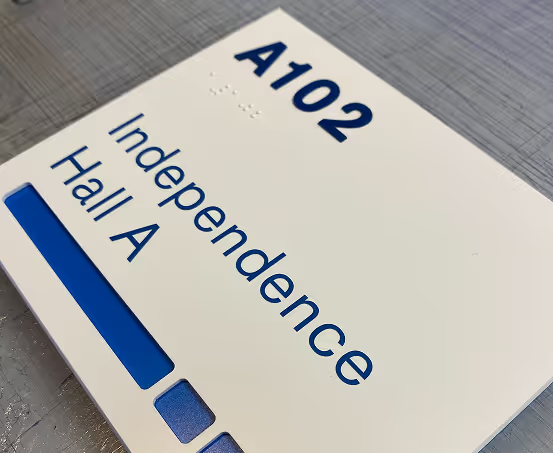
ADA & Braille Signs
%201.avif)
Acrylic Panel Signs
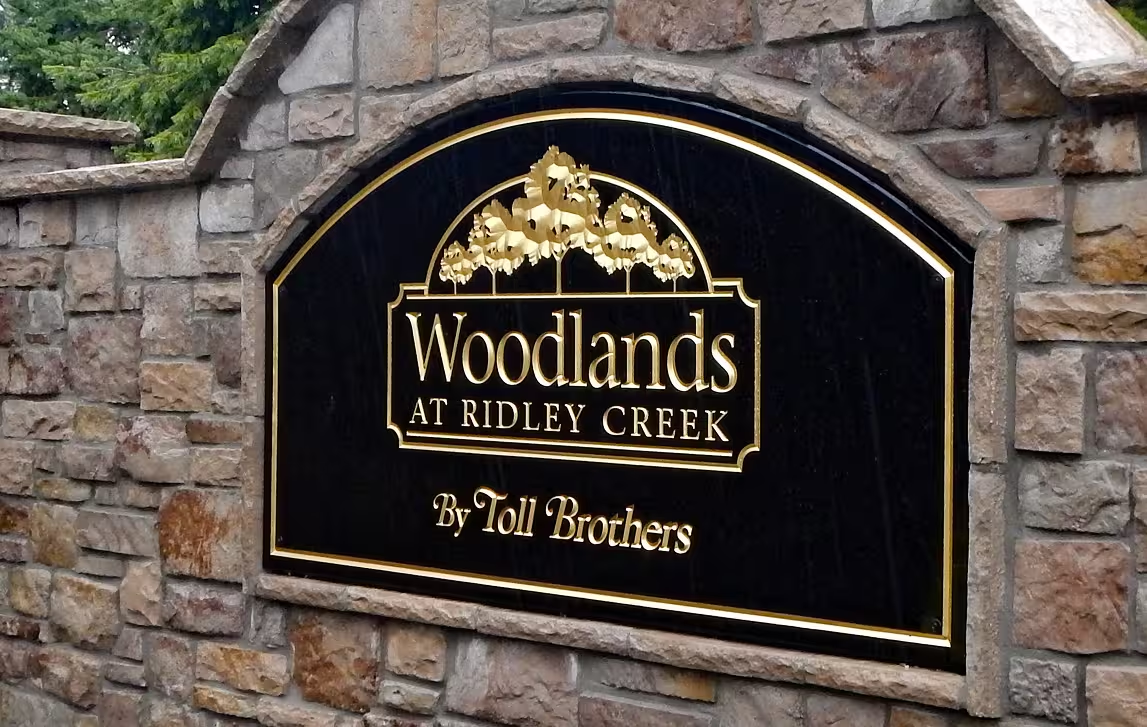
Carved Signs
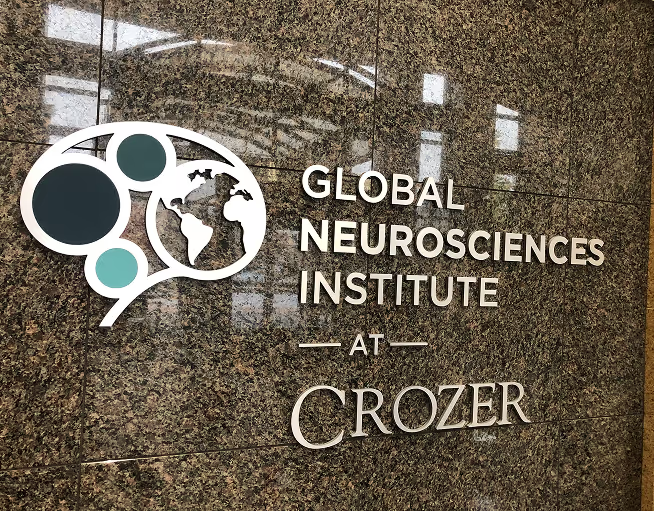
Dimensional Letters
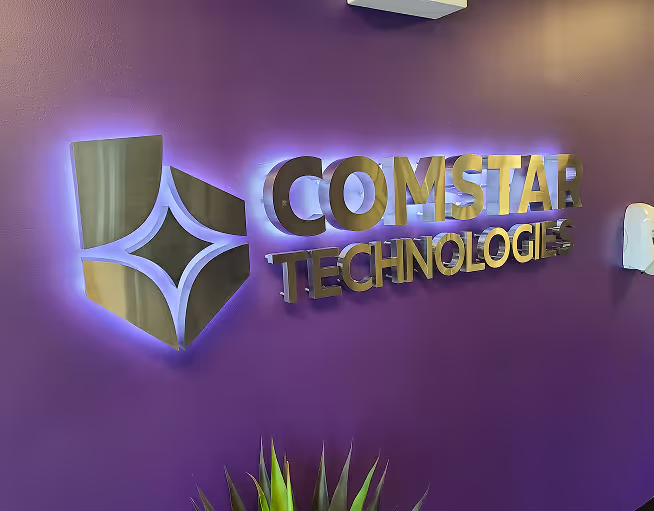
LED Illuminated Signs
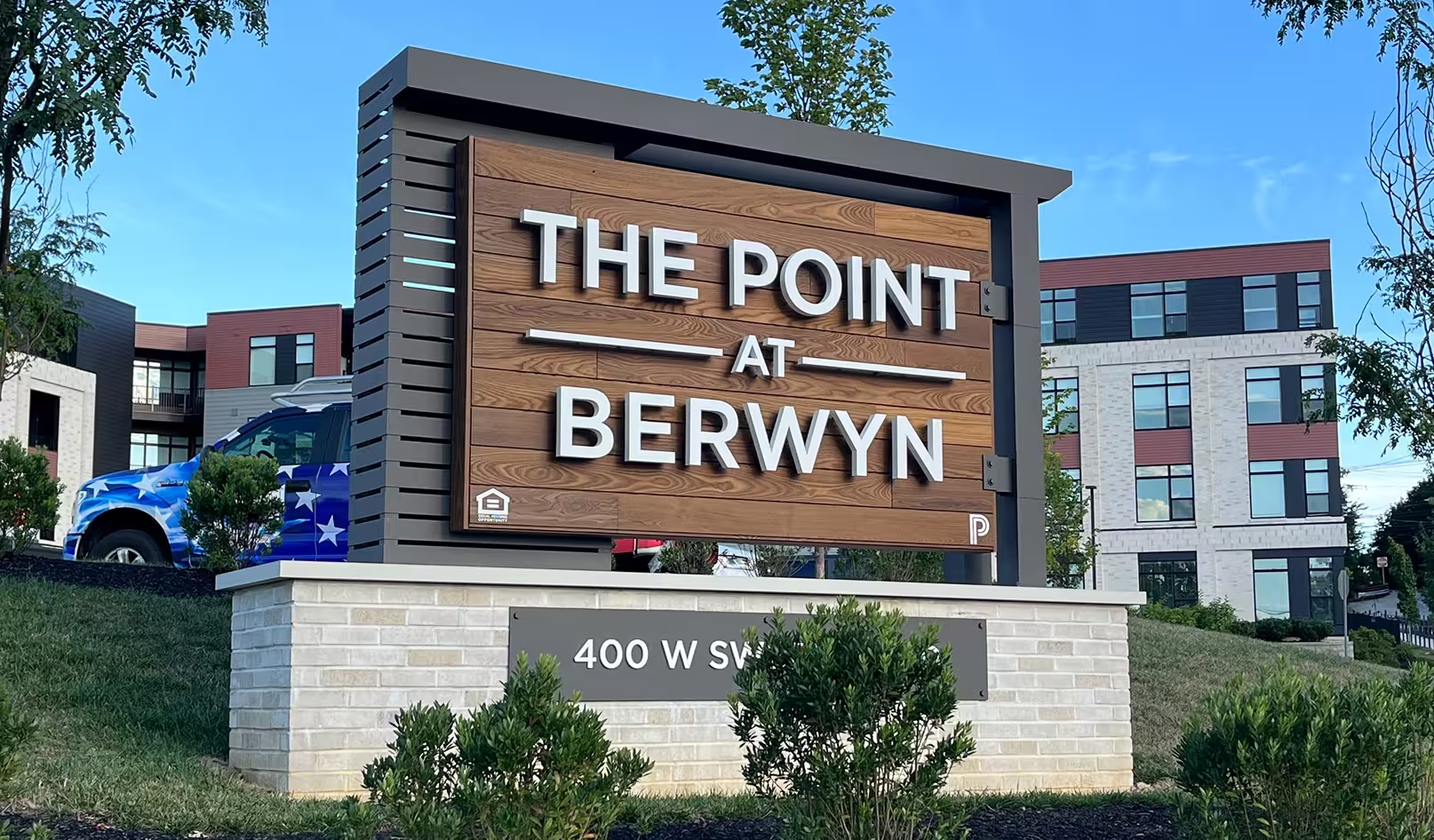
Monument Signs
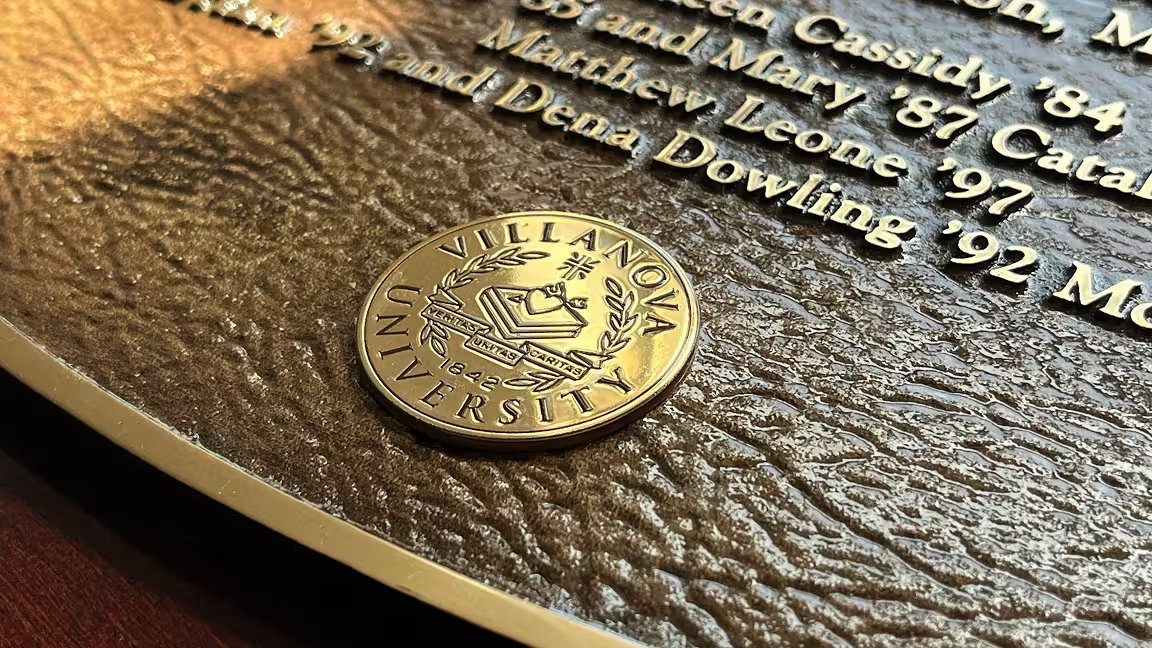
Plaques
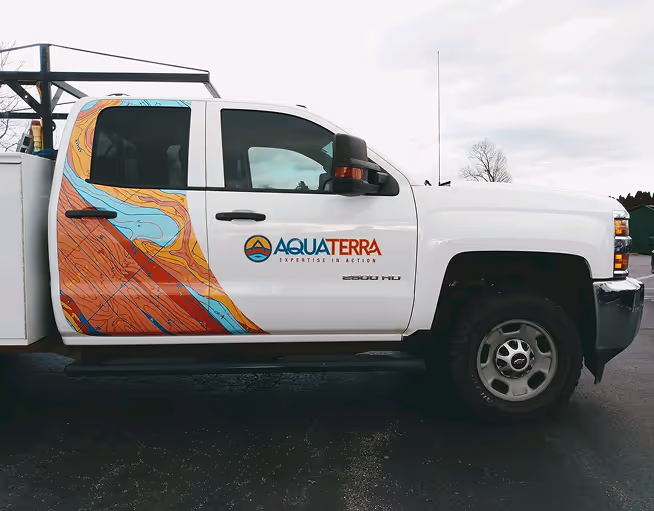
Vehicle Wraps & Lettering
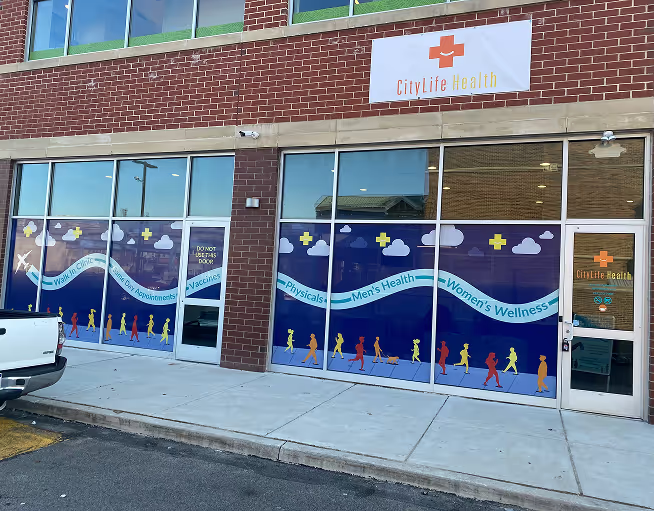
Wall & Window Vinyl
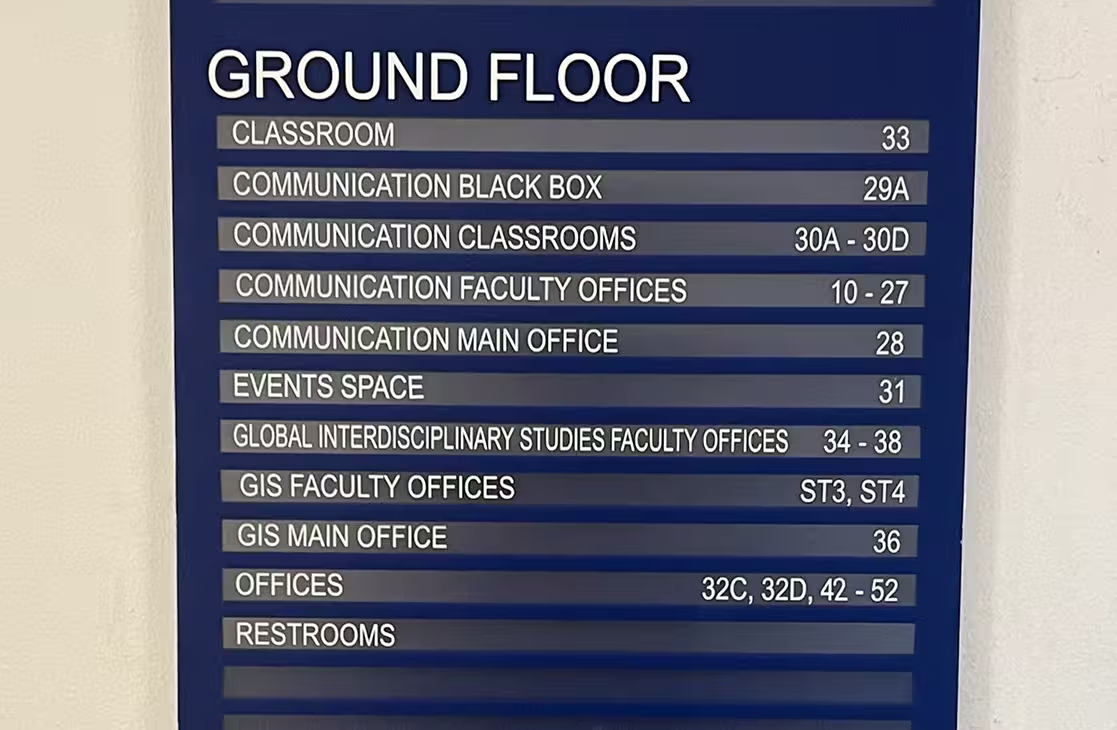
Wayfinding Signs
Let Us Make Your Perfect Sign
Toll free
+1 (800) 355-SIGN
Headquarters
- Philadelphia – West Chester PA
- 307 Westtown Road,
- West Chester, PA 19382

Tell us about your project
